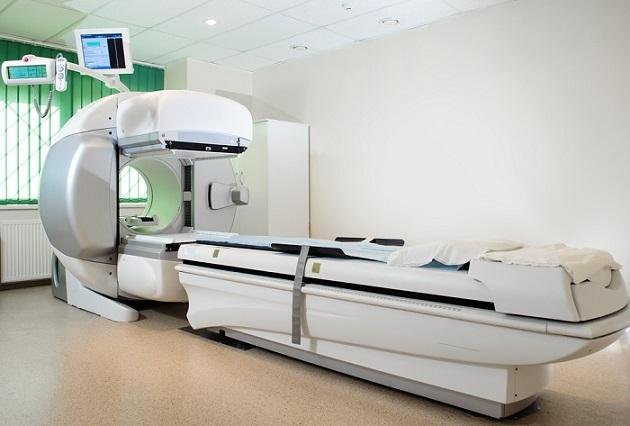Nuclear Imaging Equipment Market Size, Share, Report 2032
Nuclear imaging is a medical imaging technique that uses small amounts of radioactive material to diagnose and treat diseases. This technology plays a crucial role in detecting chronic diseases, monitoring the effectiveness of treatments, and assessing the overall health of patients. As the prevalence of chronic diseases rises globally, the demand for nuclear imaging equipment continues to grow. In this article, we will explore the current state of the global nuclear imaging equipment market, its projected growth, key players, and the factors influencing its development.
Market Overview
The global nuclear imaging equipment market was valued at approximately USD 2.96 billion in 2023. This market is expected to grow significantly, with an estimated compound annual growth rate (CAGR) of 5.62% from 2024 to 2032. By the end of this forecast period, the market is anticipated to reach a value of USD 4.84 billion.
Key Market Drivers
- Rising Prevalence of Chronic Diseases
Chronic diseases, including cardiovascular disorders, cancer, and neurological conditions, are becoming increasingly common worldwide. According to the World Health Organization (WHO), these diseases account for nearly 71% of all deaths globally. As a result, the need for accurate diagnostic tools, such as nuclear imaging equipment, is rising. - Technological Advancements
Ongoing advancements in nuclear imaging technologies, such as improved detector sensitivity, higher resolution images, and enhanced software capabilities, are boosting the efficiency and effectiveness of these imaging systems. Innovations in hybrid imaging systems, such as PET/CT and SPECT/CT, have also contributed to the market’s growth by providing more comprehensive diagnostic information. - Increasing Geriatric Population
The aging population is more susceptible to chronic diseases, leading to higher demand for diagnostic imaging. As the global population ages, the need for reliable diagnostic tools, including nuclear imaging, will continue to grow. - Expanding Applications in Oncology and Cardiology
Nuclear imaging plays a vital role in oncology for detecting and monitoring tumors and in cardiology for assessing heart function and blood flow. The growing recognition of these applications is further driving the market’s growth. - Rising Healthcare Expenditure
Increased healthcare spending in developing countries is facilitating the adoption of advanced medical technologies, including nuclear imaging equipment. Governments and healthcare organizations are investing more in healthcare infrastructure, which supports the market’s expansion.
Get a Free Sample Report with Table of Contents
Market Segmentation
The nuclear imaging equipment market can be segmented based on product type, application, and geography.
1. Product Type
- Single Photon Emission Computed Tomography (SPECT)
SPECT is a widely used nuclear imaging technique that provides detailed images of blood flow and metabolic activity in organs. This segment holds a significant share of the market due to its extensive application in cardiology and oncology. - Positron Emission Tomography (PET)
PET imaging is known for its ability to detect metabolic changes in tissues and is primarily used in oncology. The growing focus on early cancer detection is propelling the demand for PET systems. - Hybrid Systems
Hybrid imaging systems, combining SPECT or PET with CT, are gaining popularity for their ability to provide both functional and anatomical information in a single scan. This segment is anticipated to witness substantial growth during the forecast period.
2. Application
- Oncology
The oncology segment is the largest application area for nuclear imaging equipment. Nuclear imaging is crucial for detecting tumors, evaluating treatment responses, and guiding radiotherapy planning. - Cardiology
Cardiology is another significant application area, where nuclear imaging techniques are used to assess myocardial perfusion and identify coronary artery disease. - Neurology
Nuclear imaging is increasingly being utilized for diagnosing neurological disorders, including Alzheimer’s disease and epilepsy. This segment is expected to grow as awareness of neurological conditions increases.
3. Geography
The nuclear imaging equipment market is geographically segmented into North America, Europe, Asia-Pacific, Latin America, and the Middle East & Africa.
- North America
North America holds the largest share of the nuclear imaging market, driven by advanced healthcare infrastructure, high prevalence of chronic diseases, and technological advancements in imaging systems. - Europe
Europe is expected to maintain a significant market share, supported by an aging population and increased healthcare expenditure. - Asia-Pacific
The Asia-Pacific region is projected to experience the highest growth during the forecast period, owing to the rising geriatric population, improving healthcare facilities, and increasing investments in healthcare technology. - Latin America and Middle East & Africa
These regions are gradually adopting nuclear imaging technologies due to improved healthcare services and rising awareness of diagnostic imaging.
Key Players in the Market
Several key players dominate the global nuclear imaging equipment market, with their extensive product offerings and strong market presence. Some of the major players include:
- Siemens Healthineers AG
Siemens Healthineers is a leading global provider of medical technology, offering a wide range of nuclear imaging equipment, including SPECT and PET systems. Their innovative solutions focus on improving diagnostic accuracy and enhancing patient outcomes. - GE Healthcare
GE Healthcare is another prominent player in the nuclear imaging market, known for its advanced imaging technologies and comprehensive product portfolio. Their hybrid imaging systems, such as PET/CT, are widely used in oncology and cardiology applications. - Koninklijke Philips N.V.
Philips is recognized for its cutting-edge medical imaging solutions, including nuclear imaging equipment. The company is committed to developing advanced technologies that facilitate early diagnosis and effective treatment.
Competitive Landscape
The nuclear imaging equipment market is highly competitive, with key players continuously investing in research and development to introduce innovative products. Collaborations, partnerships, and mergers and acquisitions are common strategies employed by companies to enhance their market position and expand their product offerings.
Challenges in the Market
Despite the promising growth prospects, the nuclear imaging equipment market faces several challenges:
- High Costs
The initial investment and operational costs of nuclear imaging equipment can be substantial, limiting access for smaller healthcare facilities and developing regions. - Regulatory Hurdles
The nuclear imaging industry is subject to strict regulatory requirements, which can delay the approval process for new products and technologies. - Shortage of Skilled Professionals
The effective use of nuclear imaging equipment requires trained personnel. The shortage of skilled professionals in this field can hinder the market’s growth.
Future Trends
As the nuclear imaging equipment market evolves, several trends are likely to shape its future:
- Integration of Artificial Intelligence (AI)
The incorporation of AI and machine learning technologies into nuclear imaging systems can enhance image analysis, improve diagnostic accuracy, and streamline workflow processes. - Personalized Medicine
The growing focus on personalized medicine is driving the demand for advanced imaging techniques that enable tailored treatment approaches for patients. - Telemedicine and Remote Imaging
The rise of telemedicine and remote imaging solutions is expected to increase access to nuclear imaging services, particularly in underserved regions. - Increased Research and Development
Ongoing research and development efforts to improve imaging technologies, reduce radiation exposure, and enhance patient comfort will further propel market growth.






